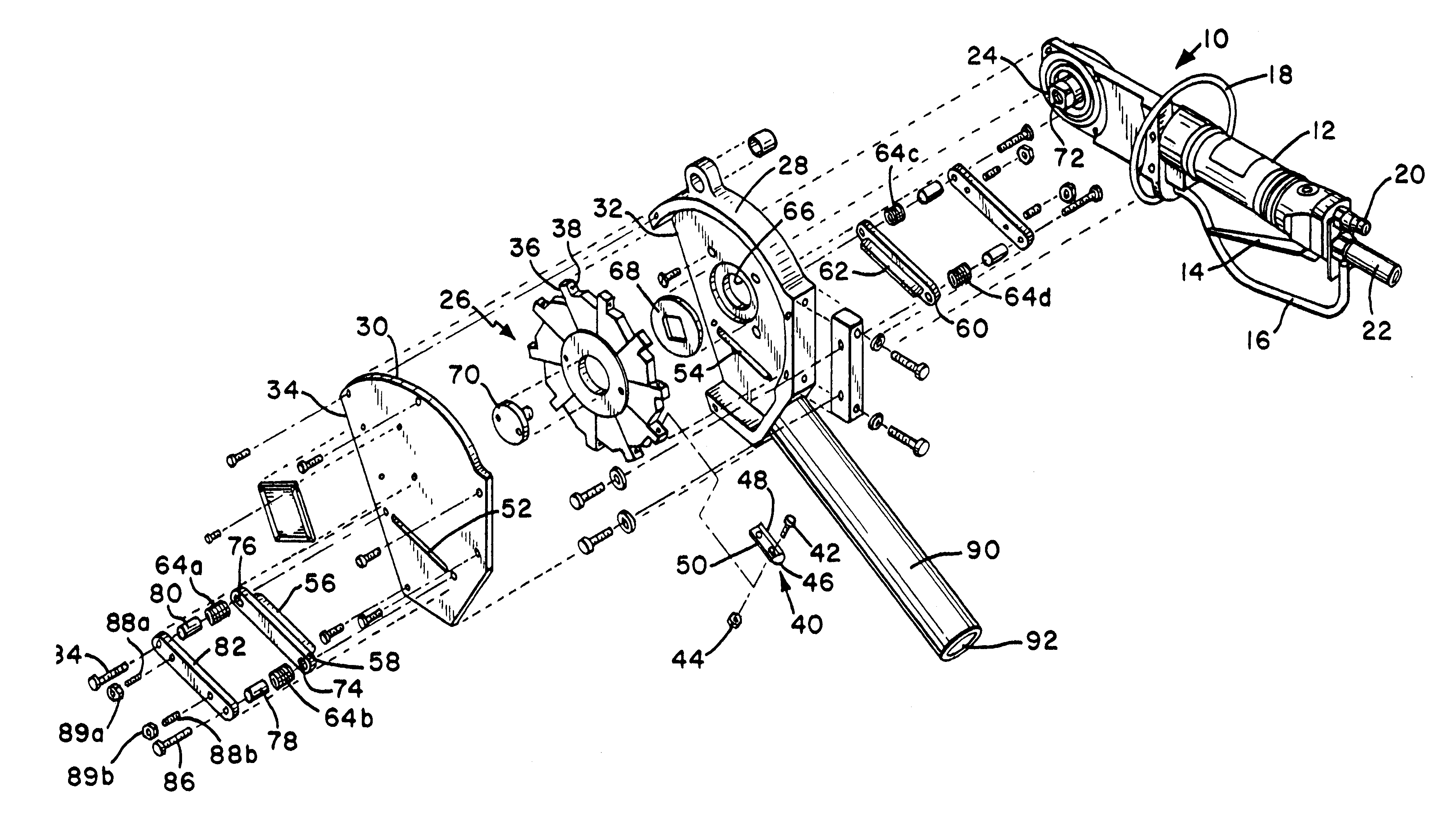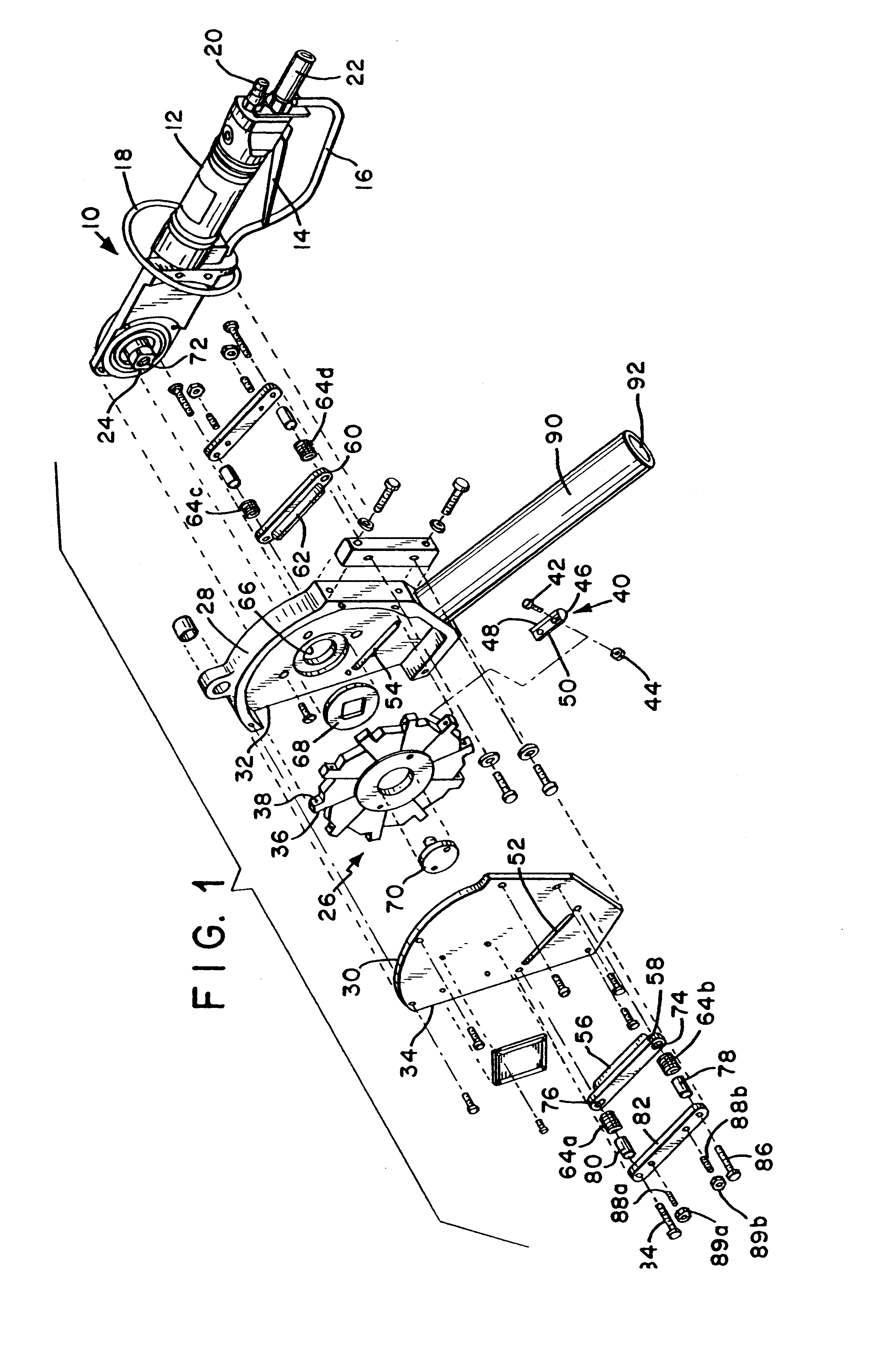Spinal cord removal tool
a technology for removing tools and spinal cords, applied in the field of tools, can solve problems such as affecting the operation of the tool and the proper affecting the removal of the spinal cord, and the fixed position of the side blade relative to the side edges of the removal blades
- Summary
- Abstract
- Description
- Claims
- Application Information
AI Technical Summary
Benefits of technology
Problems solved by technology
Method used
Image
Examples
Embodiment Construction
)
Referring to FIG. 1, the present invention includes a motor 10 having a handle 12, a trigger 14 for operating the tool and hand guards 16, 18. In the preferred embodiment, the motor 10 is a pneumatic motor connected to a supply of pressurized air via air inlet 20. Air is exhausted through exhaust outlet 22. In other embodiments, the motor may be an electric motor or the tool may be hydraulically powered, if desired.
When trigger 14 is actuated, the motor 10 spins square shaft 24, which drives the blade disk 26 in rotary motion inside of housing 28. Cover 30 forms a part of the housing so that the blade disk 26 is exposed only along a front working edge extending outward from edges 32 and 34 of the housing.
Square motor shaft 24 extends through opening 66 in housing 28, through washer 68 and into engagement with the blade disk 26. Cap screw 70 engages internal threads 72 in shaft 24 to hold the blade disk on the shaft 24.
Blade disk 26 is provided with multiple mounting surfaces 36 tha...
PUM
 Login to View More
Login to View More Abstract
Description
Claims
Application Information
 Login to View More
Login to View More - R&D
- Intellectual Property
- Life Sciences
- Materials
- Tech Scout
- Unparalleled Data Quality
- Higher Quality Content
- 60% Fewer Hallucinations
Browse by: Latest US Patents, China's latest patents, Technical Efficacy Thesaurus, Application Domain, Technology Topic, Popular Technical Reports.
© 2025 PatSnap. All rights reserved.Legal|Privacy policy|Modern Slavery Act Transparency Statement|Sitemap|About US| Contact US: help@patsnap.com


